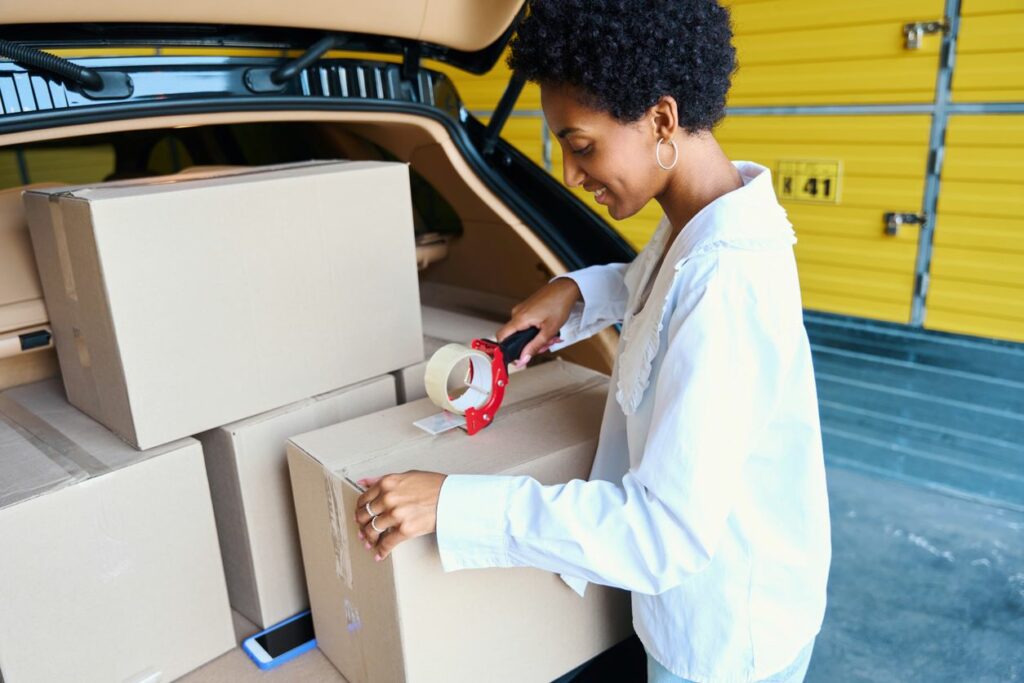First-Time Storage User Guide

If you’re new to self storage, you may find the process a bit overwhelming. That’s why the team at Central Self-Storage is here to outline each step you need to know in the guide below so you can navigate the world of self storage easily and efficiently. From selecting the right unit size to understanding how to pack your items, we’ve got you covered!
Choosing the Right Storage Unit
The first step is to decide the nature and volume of your storage needs. This means considering the following aspects.
Assess Your Storage Needs
Determine what items you need to store and for how long. Is it a household worth of belongings or just a carload of things you don’t have room for at home? This will help you decide on the size and type of unit you need—such as whether you need climate-controlled storage for weather-sensitive items.
Unit Sizes
Storage units typically range from small lockers to large garage-sized or even apartment-sized spaces. Whether you need a 5×5 or 10×25 unit, you should select a size that fits your items without wasting space. Use the online unit size calculator to estimate how much space you’ll need based on the items you have, or speak with a self storage team member who can help you decide.
Accessibility
Consider how often you’ll need to access your items. Ground-level units with outdoor access might be more convenient for some storage users, allowing you to pull up and load or unload directly from your vehicle. Or, indoor and upstairs units might offer better climate protection and will have elevators. Either way, most facilities should offer dollies and carts for moving items, and some locations may even provide a free moving truck if you need it. Lastly, ensure the daily access hours for customers will allow you to visit your storage unit when you need it.
Self Storage Security Considerations
Before renting a storage unit, it’s wise to think about the following for your peace of mind.
- Security features. Look for facilities with robust security features, such as 24-hour video surveillance, bright lighting, and electronic gated access.
- Insurance. Although facilities often have general security measures, personal storage insurance is crucial to protect against unforeseen circumstances. Check if your homeowner’s or renter’s insurance covers stored items, or consider purchasing additional storage insurance.
Storage Rental Agreement and Costs
Be sure to square away the logistics of paying for your unit.
- Understand the lease. Understand the terms of your rental agreement, including whether or not you are operating on a month-to-month basis. Know the payment schedules, late fees, and the process for terminating the lease.
- Budgeting. Consider the overall costs, including monthly rent, security deposits, and potential fees. Compare prices and promotions across different facilities.
Packing and Organizing Tips
While many packing tips and strategies for moving also apply to relocating items into self storage, there are a few specific ways to ensure your belongings stay secure and organized in your unit.
- Label everything. Use clearly visible labels on boxes and containers, ideally with tape and a bold marker. This will save time and stress in identifying, unpacking, and retrieving contents.
- Protect your items. Use supplies like Bubble Wrap, furniture covers, and packing paper to protect your belongings from dust and damage. These packing items and locks for storage units are available for purchase at the facility.
- Use the space efficiently. Place items you may need to access often at the front of your unit. Stack boxes strategically to maximize vertical space. Make sure to clear a walkway so you can actually move about the unit.
Moving Into a Storage Unit
Preparing for your move is key to a seamless transition into a storage unit.
- Plan your move-in day. Schedule your move-in day and make necessary preparations, such as reserving a moving truck or asking friends for help. Don’t forget to check the weather, too!
- Visit before moving in. If possible, visit the storage unit beforehand to get a sense of the space and plan how you will arrange your items.
Ongoing Storage Management
Now you’re all moved into your unit! However, even if you don’t anticipate needing to regularly retrieve items from storage, it’s still good to do the following.
- Do regular checks. Visit your unit periodically to check on your belongings and ensure there are no issues so everything remains in good condition.
- Keep an inventory. Maintain a list of everything you have stored, which can be invaluable for organization and insurance purposes.
Choose Central Self-Storage for Your First-Time Storage Needs
Using self storage for the first time doesn’t have to be complicated. With the right preparation and understanding, you can ensure your belongings are properly stored and easily accessible. Embrace the peace of mind that comes with decluttering your space and securing your items in a well-managed facility.
With storage facilities located across multiple states, Central Self-Storage proudly offers various types of units to our valued customers. Get in touch with your nearest facility to begin the process of renting a storage unit today!